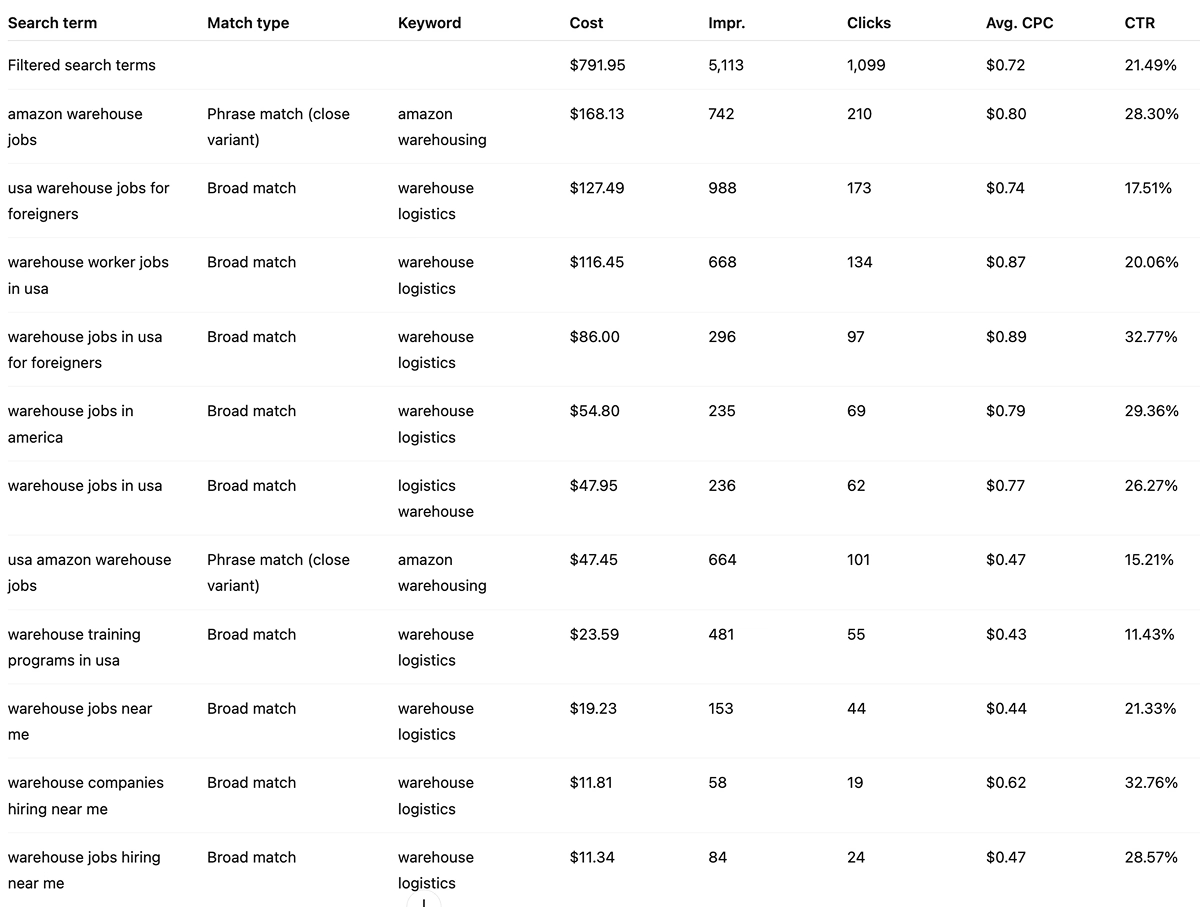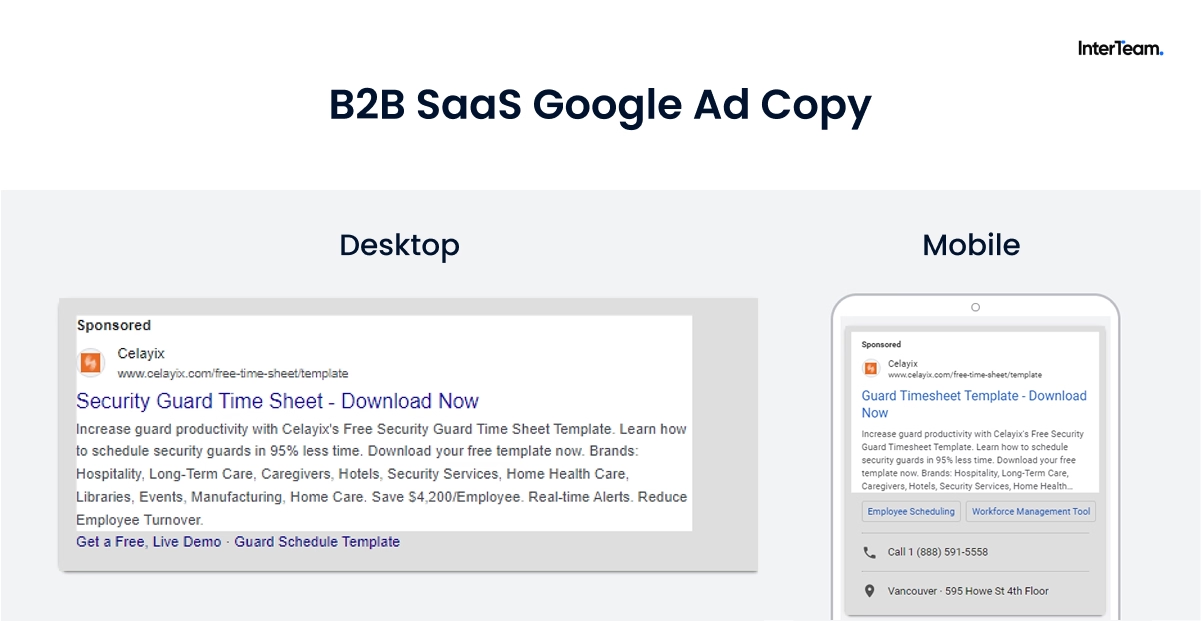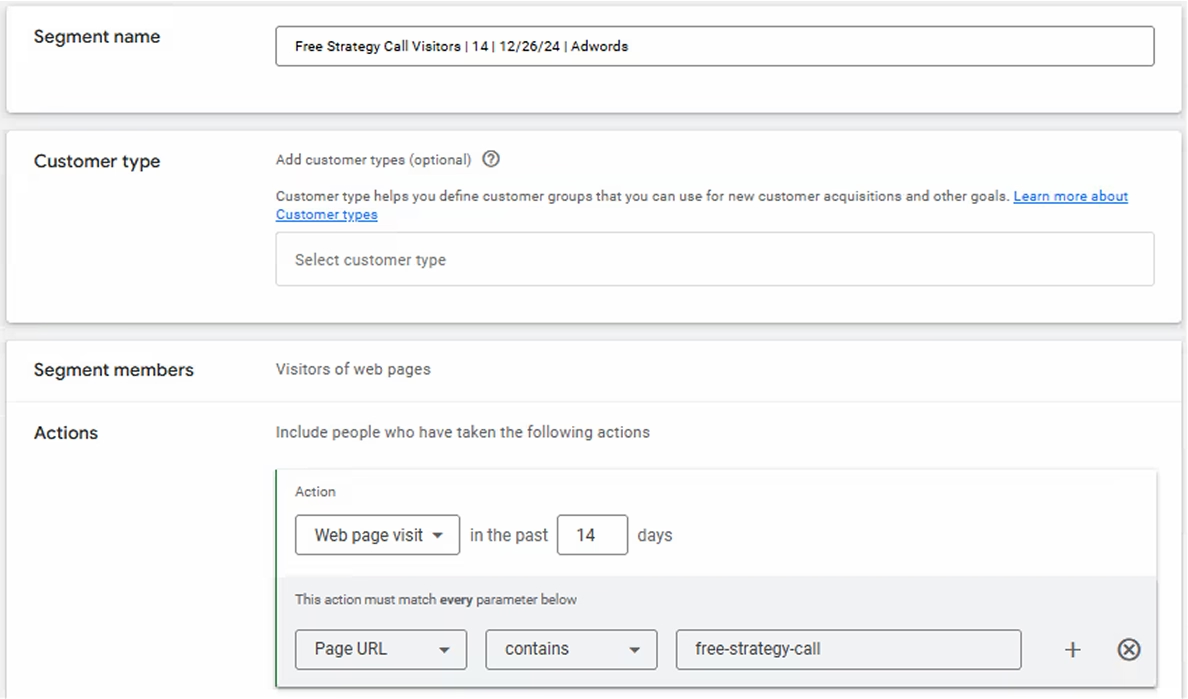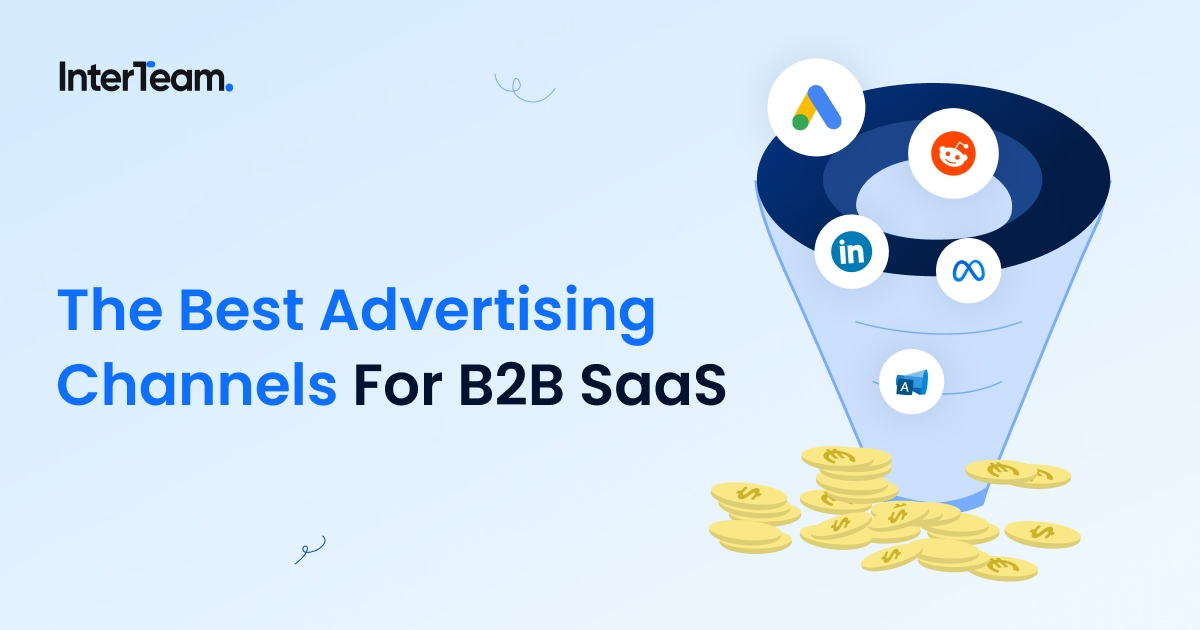Top 10 Most Impactful Google Ads Optimizations
Optimize your B2B Google Ads
Crafting a truly effective Google Ads strategy can feel like herding cats.
You try out different keywords, wrestle with bids, tweak your ad creatives, and alter ad copy, all in the hope of converting strangers into loyal customers.
But even the savviest marketers can miss the mark if they don’t take the time to optimize their Google Ads campaigns. Digital competition is fierce, after all, and your strategy needs to evolve to stay relevant.
Luckily, a small tweak here and there can lead to game-changing results. When done right, PPC can bring in twice the traffic that SEO does.
So, what sort of adjustments should you be making?
In this article, we share 10 Google Ads optimizations to make your campaign more effective and produce meaningful outcomes.
Why You Need To Continuously Optimize Your Google Search Ads
Digital marketing can change in the blink of an eye. What worked last month might actually hurt your campaign performance today. That’s why routine optimization isn’t just a nice-to-have. It’s essential.
As you continue to optimize Google Ads, you naturally start to notice how different campaign settings, keywords, and bid strategies affect your campaign. The more you do it, the easier it becomes and the more effective you can be at fine-tuning your ads.
But it’s important to have a good understanding of the basics first. There’s a lot that goes into running a Google Ads campaign. If you’re new to it or just need a refresher on budgeting, check out Determining a Budget for Google Ad Campaigns. It covers everything from daily budgets to cost-per-click strategies, so you can plan your ad budget with confidence.
The optimizations in this guide will help you reduce wasted ad spend, improve Quality Scores, and drive meaningful conversions at a lower cost per click.
Anyways, let’s move on to your Google Ads Optimizations checklist!
1. Optimize Your Keyword Strategy
Keywords are the backbone of every Google Ads campaign. Choose the wrong ones, and you’ll burn through your ad budget faster than you can say “bounce rate.”
That’s why it’s so important to identify relevant keywords that align with what people are actually searching for. Sure, you can cast a wide net with broad match keywords, but you risk pulling in a ton of irrelevant searches. Instead, consider starting with an exact keyword or phrase match for core terms and gradually expand if you need more volume.
P.S. If you’re unfamiliar with match types, our article, “When to Use Google Ads Keyword Match Types,” is a great resource to get you started. Alternatively, check out "5 Tips for Qualified Google Ads Keyword Research" for more guidance on how to optimize keywords in Google Ads.
Optimize Keyword Quality Score
Once you've built a solid keyword list, you want to check your Quality Score. You’ll find this metric next to each keyword in the Google Ads interface, and it directly affects ad rank and cost-per-click (CPC). A low Quality Score usually means your ads or landing pages aren’t closely matching user intent.
To fix this:
- Ensure ad text aligns with your targeted keywords.
- Direct traffic to highly relevant landing pages that deliver on the ad’s promise.
- Improve CTR by refining headlines and adding compelling CTAs
Pause under-performing Keywords
Not all keywords will contribute to your Google Ads success. So, it’s important you take the time to analyze which keywords lead to conversions and which ones are draining your ad budget without meaningful results. Pause or use bid adjustments on underperforming keywords to ensure your ad spend is focused on high-value opportunities that drive real engagement.
2. Review Search Terms
Running a Search Terms Report in your Google Ads dashboard is one of the simplest yet most effective ways to refine your targeting.
This report shows you what users searched for before clicking your ad, giving you insight into whether your ads appear for highly relevant keywords or waste spending on unrelated queries. Reviewing available search queries can help identify high-intent matches and eliminate wasted spend.

As you review the report, look for off-topic, low-intent, or irrelevant search terms that don’t align with your offer. If you spot anything that doesn’t match your campaign goals, add negative keywords to prevent your ads from showing for those searches moving forward.
3. Optimize Your Ad Group & Account Structure
A messy account structure can make even the best advertising campaign unravel. If your keywords are scattered across ad groups or your campaigns aren’t aligned with your business objectives, you’ll struggle to see measurable results.
Keep it simple and theme-based. Group similar keywords together so your ads focus on the user’s search intent. This is the foundation of a good Quality Score and helps you create more relevant ad copy. Plus, well-organized campaigns with strong ad group structure are actually easier to monitor, which means you’ll spot underperforming segments faster.
When optimizing your Google Ads account structure, the key is to make small changes, one ad group at a time. By breaking things down, you’ll see where the inefficiencies are, and you’ll have a much easier time fixing them.
4. Write Compelling Ad Copy
Your ad copy should speak directly to the pain points and desires of your target audience. If someone’s looking for B2B project management software, for example, they probably need something that saves time, keeps teams organized, and integrates easily with existing tools. And that’s precisely what your ad should convey.
One to two punchy sentences often work best, since people often make snap judgments on whether to click or scroll past. Include a clear benefit in your headline, then add just enough detail in your description to spark curiosity or urgency. Don’t forget a strong call to action (CTA). Simple phrases like “Try Now,” “Get a Free Demo,” or “Learn More” can be the deciding factor between a click and a bounce.

It can also help to A/B test multiple ad variations. Sometimes, a single-word tweak, like saying “Boost ROI” instead of “Increase ROI," can make a surprising difference in your click-through rates.
Note: If you need more insights on writing high-converting ads, check out How to Write Google Ads Copy for B2B SaaS and Services: A Complete Guide. It’s packed with Google Ads optimization tips to help you stand out in a crowded market.
Remember: keep it relevant, keep it human, and show prospects exactly why they should care.
5. Use Ad Extensions for Higher CTR
Ad extensions are the bonus material that can set you apart from competitors. They give users extra information, like additional links, phone numbers, or special offers, right in the search results page, which can significantly boost your click-through rate.
Here are some of the most impactful extensions:
- Sitelinks: Provide direct links to specific pages, such as pricing, demos, or your blog.
- Callouts: Highlight quick, eye-catching USPs, like “Free Consultation” or “24/7 Support.”
- Structured Snippets: Give a snapshot of product categories or service offerings.
Call Extensions: Let users call your business directly from the search engine result pages (SERPs)—ideal for businesses that value phone leads.

Make sure each extension aligns with your campaign goal. If you’re promoting a time-sensitive webinar, a callout like “Seats Filling Fast” might be perfect. On the other hand, structured snippets make more sense if you’re showcasing multiple product lines. As always, keep an eye on conversion tracking and performance metrics. If an extension isn’t driving clicks or conversions, don’t be afraid to change or remove it.
6. Perfect Your Landing Pages
You can have the world’s most compelling ad copy, but if your landing page doesn’t deliver on that promise, you’ll lose prospects in seconds. When someone clicks your Google Ad, they expect to find exactly what the ad teased, whether it’s a free demo, a special offer, or a deep dive into your solution’s benefits. It’s crucial that your landing pages align with your ads and support your broader advertising campaigns.
A few ways to make landing pages more effective:
- Match Your Messaging: Make sure the headline and main copy on the page align with the ad’s promises. If your ad says, “Start Your Free Trial,” the landing page should reflect that offer.
- Keep It Clean & Fast: Long load times or cluttered designs push visitors away. Compress images, use concise copy, and place your call-to-action above the fold so users can see it instantly.
- Highlight a Single Goal: Don’t overload the page with multiple CTAs or mixed messages. Each landing page should have one primary objective, like collecting email leads or scheduling a demo.
The takeaway? Consistency.
Whenever there’s a disconnect between ad messages, campaign goals, and landing page content, users bounce. Keep them aligned, keep it simple, and watch your conversion tracking metrics climb.
7. Choose the Best Bidding Strategy
One of the best Google Ads tips for making your campaigns more effective is to align your bids and budgets with your core business goals. If conversions are your top priority, consider a more focused approach: allocate higher budgets to high-intent keywords and reduce (or pause) spend on broader terms that rarely convert.
This isn’t just about spending more. It’s about spending smarter. Before tweaking your bids, check your Google Ads Optimization Score. While it isn’t perfect, it can highlight opportunities (like bid adjustments or keyword refinements) that may yield higher returns. Nudging that score upward is a reliable indicator you’re on the right track.
For a deeper dive, you can check out Automated vs. Manual Bidding in Google Ads. It breaks down the pros and cons of each method, so you can choose the best fit for your campaigns, whether that means automation, manual control, or a smart bidding strategy that blends both.
Whether you prefer manual bidding, automation, or a combination of both, you should stay vigilant about the metrics that matter most (e.g., cost per acquisition).
8. Refine Your B2B Audience Targeting & Segmentation
Improving your Google Ads campaign performance isn’t just about which keywords you target but who actually sees your ads in the first place. That’s where audience targeting and segmentation come in.
By focusing on people most likely to engage with your offer, like past site visitors, in-market audiences, or users who fit a specific demographic, you’ll make your B2B search campaigns more effective and avoid wasting money on irrelevant clicks.
Retargeting Audiences
Remarketing lists for search ads allow you to reconnect with people who’ve already shown interest in your brand, like those who visited your product page or requested a demo. These high-intent users are often just a nudge away from converting. By showing them ads that address their specific pain points or remind them of your offer, you can gently nudge them down the funnel. This relevant follow-up can be the difference between a lost prospect and a new customer.
For more information on how to follow up with search ad leads, check out our "Complete Guide to Retargeting Campaigns in Google Ads."

In-Market Segments
In-market segments identify individuals who are actively researching offerings similar to yours. If your goal is to optimize your Google Ads campaign for conversions, consider increasing bids for these groups. They’re already in buying mode, which makes them prime candidates for solution-focused messaging. By aligning your ad copy and landing pages with their immediate needs, you’ll maximize the chance of turning interest into action.
If you want to learn more about using retargeting and audience segmentation in B2B campaigns, check out the Guide to B2B Targeting for Google Search Ads.
9. Test & Optimize Regularly (Daily, Weekly, Monthly)
Even the most expert optimizations can’t guarantee long-term success if you never revisit them. The digital landscape and your competitors can change overnight. That’s why regular check-ins are essential if you want to keep improving your Google Ads performance.
Daily
Scan for any sudden anomalies or disapprovals. Did your click-through rate (CTR) nosedive for a certain keyword? Is an ad extension rejected? Quick fixes at this stage prevent small issues from spiraling into costly problems.
Weekly
Review your negative keywords, bids, and basic campaign metrics. This is also a good time to check your Google Ads Optimization Score and see if there are any easy suggestions worth testing, like refining an ad’s headline or adjusting a bid by a few cents.
Monthly
Take a deeper dive into conversions and cost per acquisition (CPA). Evaluate whether your campaigns are hitting your broader goals. If not, consider revising your landing pages, exploring new keyword ideas, or shifting budget toward top performers.
By integrating daily, weekly, and monthly routines into your Google Ads campaign workflow, you’ll catch and correct performance dips faster, ultimately making your search ads more effective in the long run.
10. Leverage Geo-Targeting & Ad Scheduling
Getting your ads in front of the right people also means reaching them in the right places and at the right times. Geo-targeting allows you to concentrate your budget on high-performing locations and exclude regions that don’t convert well, which is especially valuable for businesses with specific service areas or localized audiences.
Ad scheduling works similarly by letting you show ads only during peak hours or on certain days of the week. For instance, if most of your conversions happen on weekdays between 9 a.m. and 5 p.m., you can schedule your search ads to run more aggressively during those hours and scale back during off-peak times. This helps you optimize your Google Ads campaign by focusing spend where it makes the most impact.
Combine the two for maximum efficiency. Let’s say you operate in multiple states but see the best results in metropolitan areas on weekdays from 8 a.m. to noon. With a few simple settings in Google Ads, you can funnel your budget into precisely those hotspots and time slots. As a result, you cut wasted ad spend and improve your overall Google Ads performance, all without overcomplicating your strategy.
By refining your geo-targeting and ad scheduling together, you’ll not only make your Google Ads more cost-effective but also ensure your message hits prospects at moments when they’re most likely to take action. It’s a straightforward yet powerful way to round out your optimization efforts.
Free Google Ads Account Audit
If you’re serious about running an effective campaign, regularly reviewing and optimizing your Google Ads account is non-negotiable. Every adjustment, whether refining keywords, adjusting bids, or fine-tuning your audience targeting, can help lower costs and drive better results.
This Google Ads optimization checklist is a great place to start.
But if you want to streamline the process and maximize your ROI faster, having an expert audit your account can make all the difference. Instead of spending hours trying to pinpoint inefficiencies or troubleshoot low-performing ads, an expert can step in, analyze your campaigns, and provide clear recommendations that save you both time and money.
Ready to see how your campaigns stack up? Book a free strategy call with us today.
Optimization Technique Case Studies
Want to read examples of our Google Ads Optimization process? Check out these client campaign case studies from Google Ads Projects we worked on for more Google Ads tips.
- Case Study – Google Ads and Bing Ads for B2B Property Tech SaaS Solution
- Case Study – Google Ads and Bing Ads for B2B SaaS for Senior Living
- Case Study – Google Ads for B2B SaaS PR Solution
- Case Study – Google Ads for B2B Web Design Agency
FAQs
Template question
Template text answer








